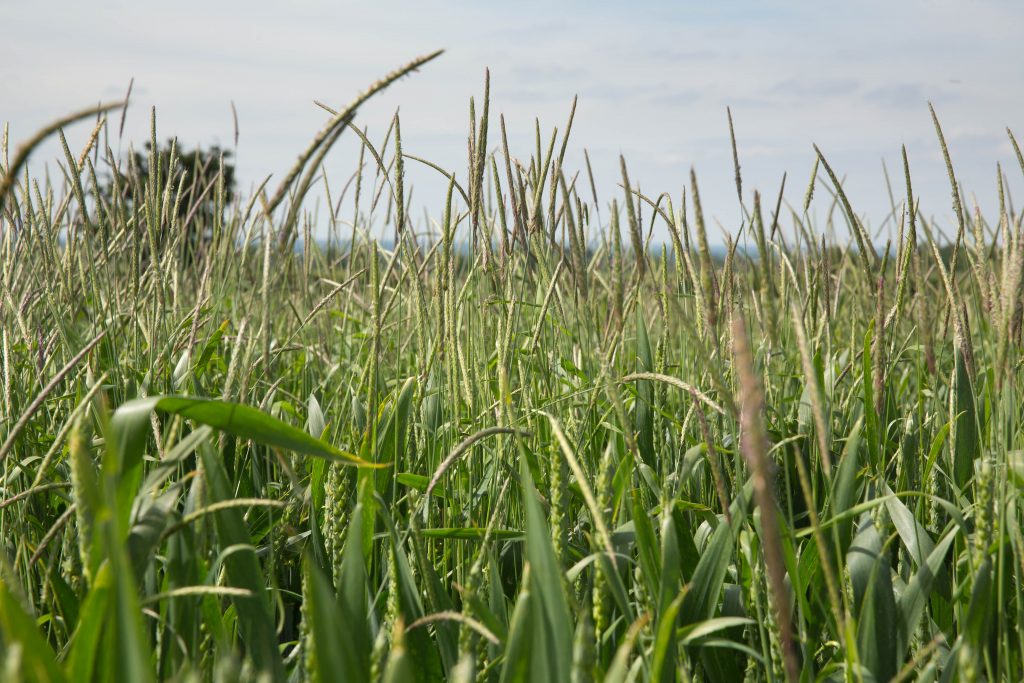Pre- and post-ems only one part of the long-term black-grass solution
25th June 2018
Pre- and post-emergence herbicide applications are vital to the control of black-grass populations, but are only part of the solution when it comes to delivering a long-term answer to the
Pre- and post-emergence herbicide applications are vital to the control of black-grass populations, but are only part of the solution when it comes to delivering a long-term answer to the black-grass conundrum. That is the advice from Adama’s herbicide technical specialist, David Roberts, who, as the company launches its autumn 2018 crop protection knowledge hub, offers his advice to growers faced with the daunting task of controlling black-grass in cereals and oilseed rape.
The latest Adama knowledge hub, fittingly titled ‘Overcoming the black-grass burden’, is available now via subscription at www.adama.com/uk. It contains a wealth of useful information, all of which has been designed to enable growers to get a better understanding of how to deal effectively and efficiently with black-grass in combinable crops.
“The key message throughout the hub is that there is no single measure which will totally eliminate black-grass,” David Roberts explains. “Instead, effective control is reliant on a combination of factors, with weed mapping, resistance testing, variety choice, rotation, cultivation technique and pre- and post-emergence chemical control measures all playing their part in an integrated approach.”

David Roberts.
To compensate for the rising problem of herbicide resistance in black-grass, David Roberts recommends the use of detailed weed mapping and resistance testing to ensure any chemicals that are applied are used accurately and are appropriate to the current weed population. “Resistance amongst black-grass populations to some of the key herbicide active ingredients is intensifying the challenge, so it makes sense to understand your enemy and to devise a crop protection policy accordingly,” David describes.
“Mapping black-grass populations, either manually or via the use of modern drone or GPS technologies, and subsequently testing those weed populations for herbicide resistance will give growers a clearer understanding of the task at hand.*
“With the problem mapped and the enemy profiled, growers will be able to work with their agronomist to fine-tune their current crop protection protocols, thereby giving themselves the very best chance of overcoming the current black-grass burden, whilst also laying the foundations for improved control in subsequent years.”
From a chemical control perspective, David stresses the need to make pre- and post-emergence herbicide applications. “Growers are strongly advised to apply a robust pre-emergence herbicide within 48 hours of the crop being drilled,” he explains. “The ensuing post-emergence application should be made soon after black-grass plants have become visible (i.e. at BBCH 11 -12).”
With more than 15 active ingredients available to use against black-grass, selecting the right combination of products can be complex. “Flufenacet is regarded by many as the cornerstone active ingredient for cereal crops,” David explains, “but it’s efficacy can be improved by using it in combination with other compatible partner products.
“Adding Tower (250g/l chlorotoluron, 40g/l diflufenican and 300g/l pendimethalin) at the pre-emergence timing improves the efficacy of flufenacet, raising the level of black-grass control from 60 to 70%. With the addition of Avadex, the level of pre-emergence control can be increased to 80%.”
Anthem (400g/l pendimethalin) is also a good option for black-grass control. “Compared to many CS formulations of pendimethalin, Anthem’s SC preparation is more effective, and is a good tank mix partner option,” David adds.
In terms of black-grass control in oilseed rape, David recommends an early season application of carbetamide to hit black-grass seedlings when they are small and susceptible.
“A sequenced approach of an early (pre-emergence to 4 true leaves) application of Crawler (600 g/kg carbetamide), followed by propyzamide in November if/when a second flush of grassweeds has emerged will give oilseed rape growers the best chance of keeping ahead of black-grass populations,” David explains. “Where black-grass populations are particularly high, a foliar graminicide should also be considered between the Crawler and propyzamide treatments.”
When used as part of a sequenced approach, an early season application of carbetamide can contribute to the cost-effective delivery of more than 96% control of black-grass and has been proven to optimise the efficacy of herbicide programmes with propaquizafop and propyzamide. It is also effective against Chickweed and Speedwell, with ryegrasses, meadow grasses and wild oats also showing susceptibility.
* To find out more visit about weed resistance testing go to www.adas.uk/Service/herbicide-resistance-testing or email weeds@adas.co.uk.

